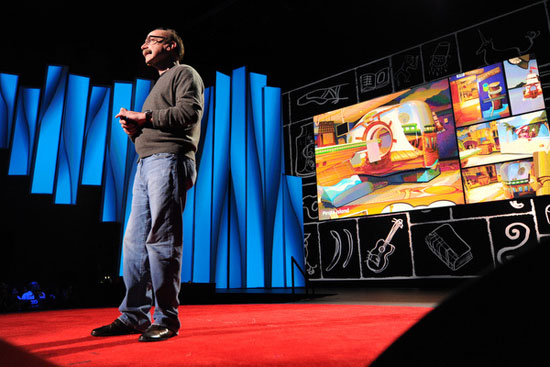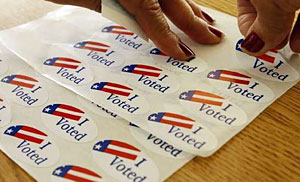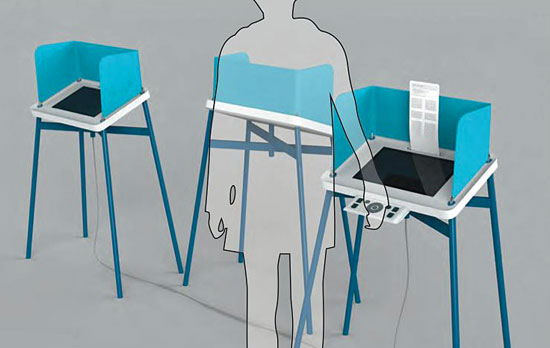
IDEO founder David Kelley has melded utility with elegance in his firm’s designs for famous clients.
It’s not easy to re-imagine the largest voting system in the nation, but it doesn’t hurt to have the company behind stand-up toothpaste on your team.
For the past year or so, Los Angeles County has been working closely with IDEO, the innovative Bay Area design firm, to help with the county’s multi-faceted initiative to update its antiquated voting apparatus. The challenge is a big one: The county’s system serves some 4.8 million registered voters in 11 languages at some 5,000 polling places, and is currently using technology that dates, in some cases, to the 1960s.
So in an effort to think creatively about the future, the office of the Registrar-Recorder/County Clerk and the committees guiding the county’s Voting Systems Assessment Project reached out to a firm whose groundbreaking design work goes back to Apple’s first computer mouse in the 1980s.
“We wanted to focus on innovation, and we were attracted by their philosophy of design that’s human-centered,” says Efrain Escobedo, governmental and legislative affairs manager for the Registrar-Recorder/County Clerk’s office. IDEO, he says, studies “what the experience is underlying a project—whether it’s a filling station or a vegetable peeler—rather than just designing around what’s cheapest.”

County officials say there’s no plan to drop this popular feature of voting.
Created as a merger of four design firms—one in Palo Alto, two in San Francisco and one in London—IDEO, which is now global, specializes in cutting-edge product and organizational design. One of its founders, David Kelley, was close friends with the late Apple co-founder Steve Jobs, whose elegant products became a computer industry standard. But IDEO’s work has run the gamut, from upright dispensers for Crest toothpaste to a rethinking of school lunches.
Initially, Escobedo says, the county learned about IDEO during an experiment with crowdsourcing in which the county put out a call for ideas on the future of voting through OpenIDEO, an online platform and community. But in early 2013, after conducting its own extensive data-gathering process, the county engaged the company’s consultants to help analyze the research under a series of short-term agreements worth about $1 million.
Among IDEO’s objectives is a rethinking of the traditional voting machines so they not only accommodate voters in a multiplicity of languages and settings, but are also universally accessible no matter the voter’s age, education, familiarity with the process or physical abilities.
“We’ve delivered three really, really rough concepts that we’re working now to whittle down into one,” says Sarah Rienhoff, IDEO’s public sector lead on the voting project. Visual renderings and mock-ups have ranged from boxy one-stop, hands-free voting stations to lightweight podium-like contraptions that can be easily moved around by poll workers and stored.
To augment data the county gathered, IDEO consultants examined on their own the extremes of the voting spectrum—newly naturalized citizens, older voters, young voters, people who had stopped voting and people with physical limitations that impacted their use of the existing system.
That last group was especially important, in part, because advocacy groups for the disabled have sued over issues such as the lack of touch-screens and the paper ballot requirement—mandates that, they contend, make voting harder and less private for visually-impaired voters.
So, Rienhoff says, the group put a special emphasis on disabled voters. One focus group brought county staffers nearly to tears as a man with cerebral palsy talked about the alienation of being shunted off to vote in a separate booth for handicapped people.
Another exercise took the form of an educational field trip.
“We did ‘dining in the dark’ at Opaque, a restaurant in Santa Monica where all the [servers are] visually impaired or blind and the customers eat in a fully dark dining room,” says Rienhoff, adding that they went back the next day to interview their waiter—one of more than 44 individual interviews they conducted last spring.
The IDEO group also studied lottery kiosks as an example of a system in which decision-making is paired with convenience and observed elections in Pasadena and Compton to compare voting in diverse communities.
What’s more, the firm’s creative approach served to inspire the Registrar-Recorder staff, Escobedo says. Among other things, they created an “idea wall” in the executive office in Norwalk after visiting IDEO’s workspace.
As the project’s self-imposed 2016 deadline approaches, some broad outlines have begun to take shape. For one thing, Escobedo says, it is clear that the new system won’t include voting via Internet or smart phone, at least for now, due to security concerns.
That, however, doesn’t preclude the possibility of the vote-by-mail option morphing someday into a scanned ballot sent by encrypted email, or a digital tablet onto which voters can electronically upload their pre-marked decisions. Also, look for bigger ballots, voting machines with universal design and hands-free access and possibly a voting process that revolves less around a single day at a single polling place than, say, a 2-week voting “window” or community voting centers.
“By the end of the year, we hope, we’ll have an actual final design concept that we can begin to engineer,” says Escobedo, who expects to start prototyping some time next year.
One aspect of the process is unlikely to change, however: That little “I Voted” sticker?
“Oh, that’s a mandatory do-not-leave-out,” laughed Escobedo. “People love that. It’s not going anywhere.”

One possibility for future voters might be more portable voting machines, as seen in this IDEO rendering.
Posted 11/13/13






